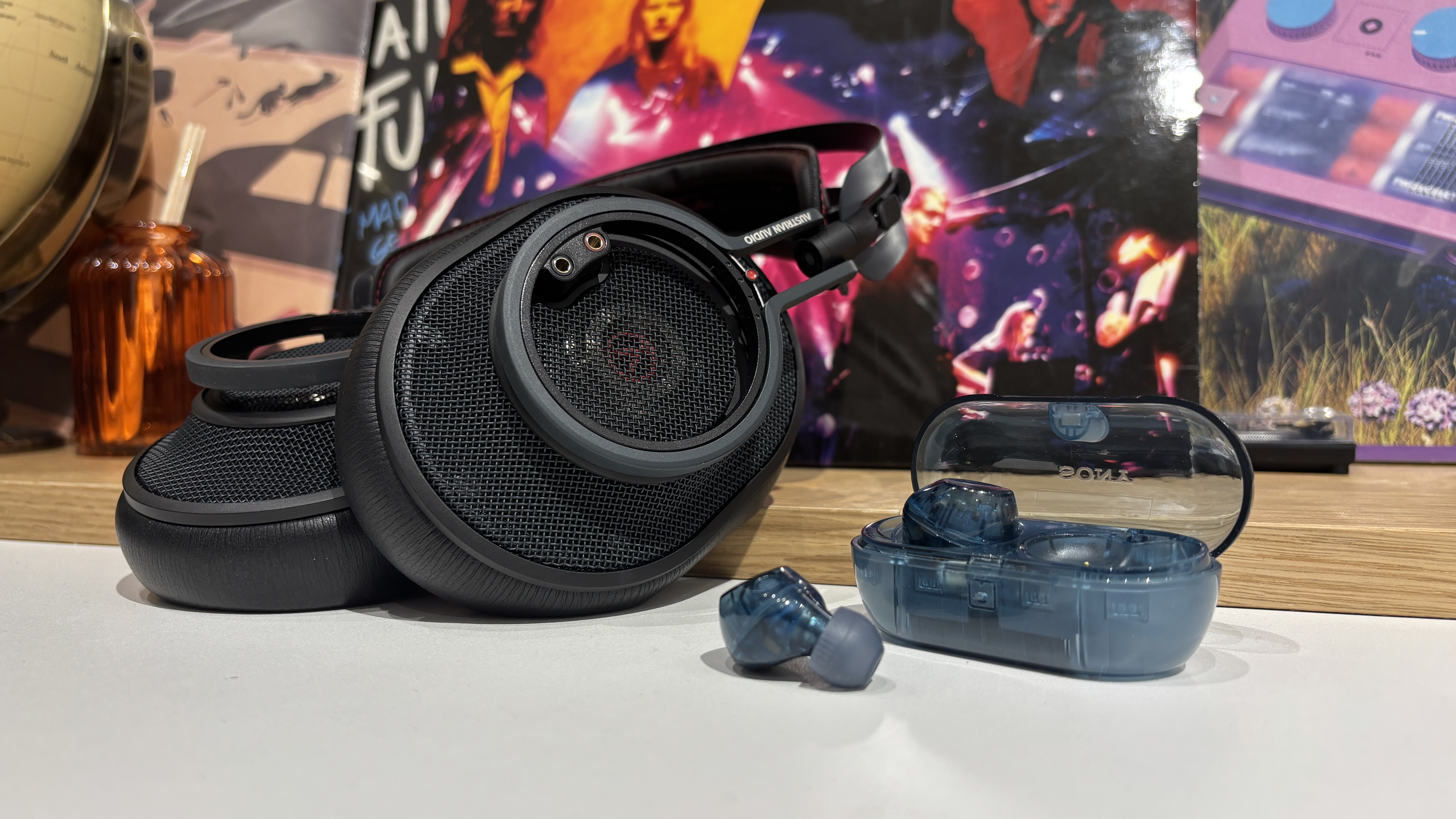Freeview HD: everything you need to know
High-definition pictures are the key to a genuinely satisfying relationship with your flatscreen TV, and in 2010 a new broadcast service has made upgrading to HD easier than ever
Most of Toshiba's 2010 Regza TVs have built-in Freeview HD
If you've purchased a new TV in the past few years, the chances are it’ll be ready for high-definition pictures. However, just because your TV can display HD, it doesn’t follow that you’ll be watching HD. Indeed, when the BBC’s head of HD Danielle Nagler took up her role in 2008, she said: “Only a minority of HD Ready TVs are actually used for HD viewing.”
The launch of Freesat in 2008 has helped: more than a million homes now use the satellite service, and most of them watch in high-def. Sky+HD adds just over two million homes, while a further 862,000 use Virgin Media’s HD-enabled V+ box.
Throw in BT Vision, BBC iPlayer and Apple TV, and you’ll bolster the total a little more – but that still leaves more than 20 million homes currently watching Freeview at SD quality. It’s these households that Freeview HD is aimed at.
Freeview HD doesn’t replace the existing Freeview system. It co-exists with its sibling, operating in one of the Freeview multiplexes (frequency ranges capable of carrying several channels), upgraded to use more efficient video coding – MPEG4 – as part of a broadcast standard called DVB-T2.
You'll need a Freeview HD TV or receiver
To watch it, you’ll need to buy a new Freeview HD receiver, built in to products such as set-top boxes and digital televisions. Given that many of 2010’s new TVs will include Freeview HD tuners as standard, it all sounds easy enough: you can readily see why, according to Ilse Howling, Freeview’s managing director, that “this is when HD will go mass-market”.
Philips HDT8520 Freeview HD PVR: £300
However, there’s a ‘but’ coming. You’ll also need to live in a region of the UK that supports HD coverage – and, for some of us, that will mean no Freeview HD until 2012 at the earliest.
True, according to the most recent figures, as much as 50 percent of the country will be receiving Freeview HD for the World Cup this month, but that still leaves large swathes out in the cold. (You can use the Freeview HD postcode search online to find out if you can get the service in your area).
So why introduce a new TV service now, so soon after UK customers have switched from analogue to SD digital? And why not undertake a UK-wide roll-out of the service?
According to Greg Bensberg, Ofcom’s senior adviser on the digital switchover, it’s simple pragmatism. “Broadcasters were pushing us hard to find a way of improving HD availability. This is our response.”
An ‘over the aerial’ HD service was considered essential for the high-definition message to reach a wider audience, but it had to work within existing budgets and restrictions, and that’s a major reason why the Freeview HD roll-out has had to be phased in, rather than introduced nationally in one go.
The available bandwidth to support the service is linked in to the digital switchover in each UK broadcasting region – barring a few special cases made to ensure the magic ‘50 percent coverage’ mark was reached in time for the World Cup.
Humax HD-FOX T2 Freeview HD receiver: £180
The technical stuff explained
So how does it work? Bensberg says: “Using the MPEG2 coding system [used by DVD and Freeview], an HD broadcast requires around 20Mbps per second of data; using MPEG4, it’s more like 12Mbps and, in time, as low as 8Mbps.”
This efficiency is vital, because there’s no more broadcast space on offer. The multiplex used for Freeview HD has capacity for between 36Mbps and 40Mbps – enough for BBC HD, ITV HD, Channel 4 HD and S4C’s HD channel Clirlun.
That leaves space for a fifth service, planned to be Five HD, but recently that broadcaster has hitched its star to pay-TV, so for now, the available space has reverted to the BBC.
But if MPEG4 is more efficient, why not abandon MPEG2 and so get more HD? According to Bensberg: “There are more than 20 million Freeview receivers in the UK, and we can’t expect consumers to make another switchover so soon after having made the first.” Freeview HD kit switches between MPEG4 and MPEG2 use, depending on the channel you’re watching.
Panasonic Freeview HD TVs don't output Dolby Digital 5.1
Problems with surround sound
So that's the picture side of the equation. So what about sound? Well, according to the Freeview HD website, the service gives you "fantastic cinema sound" if you've got a 5.1 surround sound system and a home cinema amplifier.
Well actually, that's not quite true. Since the first Freeview TVs and HD set-top boxes went on sale, a problem has come to light. While you may be getting HD pictures, you may not be getting Dolby Digital 5.1 surround sound as you do on other high-definition TV services.
Why? Because it transpires that not all the Freeview HD TVs and set-top boxes currently on sale are capable of transcoding the multichannel audio signal being broadcast by the BBC on its HD programmes (ITV HD is only broadcasting in stereo).
Panasonic DMR-BW780 Blu-ray recorder has twin Freeview HD tuners
It's all to do with the fact that the Beeb has to provide an audio description service on BBC HD, and to do this it has to use the AAC audio codec present in Freeview HD receivers, rather than Dolby Digital.
Hence the main audio is coded as AAC-LC and the audio description as HE-AAC, because the main audio soundtrack and the audio description must use the same encoding family, as explained in this BBC blog by Phil Layton, project manager Digital Service Development, BBC R&D.
So why does this matter? Well, put simply, not all current Freeview HD TVs and set-top boxes can transcode from the AAC format to Dolby Digital so that your current AV equipment will be able to understand it.
According to the Beeb, transcoding will only become mandatory in all Freeview HD products after April 2011, which means there may well be confusion for a while to come.
With that in mind, we've undertaken our own research to find out which Freeview HD products do transcode and output Dolby Digital 5.1 via a digital connection to a home cinema amp/receiver, and which do not, so here are the results:
Digital Stream DHR8202U - no
Goodmans GDB300HD - no
Humax HD-FOX T2 - no (although Humax says it will add the functionality in an update)
Icecrypt T2200 - no
Panasonic TX-L37V20 TV - no
Panasonic TX-L37S20 TV - no
Panasonic TX-P46G20 - no
Philips DTR5520 - no
Philips HDT8520 - no
Linsar FHD1 - yes
Sharp TU-T2 - yes
Sony KDL-46EX503 TV - yes
Sony KDL-37EX503 TV - yes
Samsung UE37C6505 TV - yes
LG 37LE5900 TV - yes
LG 42LE7900 - yes
Thanks to professorhat for this exhaustive thread on our Forums in which he tests the Philips DTR-8520 and finds it does not output 5.1 sound (among other problems).
Reason to be downhearted? Not necessarily. True, Freeview HD isn’t perfect, but it works, it’s free (initial purchase aside) and, from what we’ve seen so far, it can deliver great picture quality. It would just be good if they could get that surround sound issue sorted.
To find out more about high-definition TV, see the Ultimate Guide to Television 2010, on sale now. You can also buy single issue copies or subscribe at www.themagazineshop.com/ugbis
And for reviews of all the latest Freeview HD set-top boxes, see the July 2010 issue of What Hi-Fi? Sound and Vision, on sale now
Get the What Hi-Fi? Newsletter
The latest hi-fi, home cinema and tech news, reviews, buying advice and deals, direct to your inbox.
Andy is Global Brand Director of What Hi-Fi? and has been a technology journalist for 30 years. During that time he has covered everything from VHS and Betamax, MiniDisc and DCC to CDi, Laserdisc and 3D TV, and any number of other formats that have come and gone. He loves nothing better than a good old format war. Andy edited several hi-fi and home cinema magazines before relaunching whathifi.com in 2008 and helping turn it into the global success it is today. When not listening to music or watching TV, he spends far too much of his time reading about cars he can't afford to buy.

